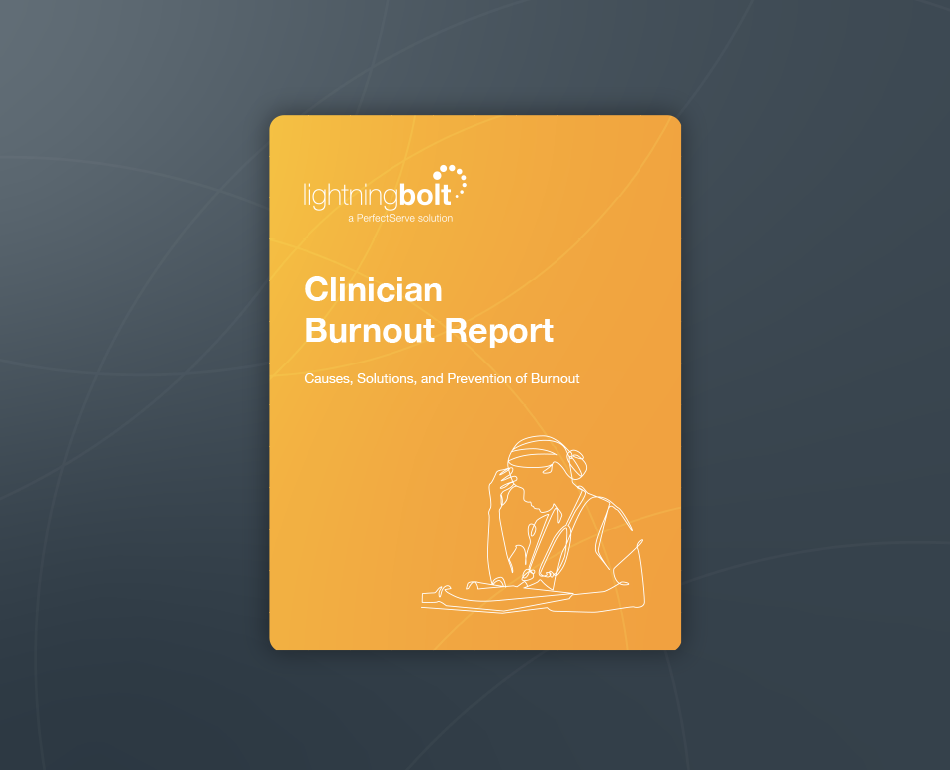How To Balance Clinical Assignments and Provider Preferences with Rule-Based Scheduling

Organization
St. Michael’s Hospital
Location
Toronto, Canada
Implemented Solution
PerfectServe’s Lightning Bolt Scheduling
TABLE OF CONTENTS
St. Michael’s Hospital is an urban, quaternary care trauma center located in downtown Toronto, Canada. St. Michael’s is renowned for its teaching and research and is fully affiliated with the University of Toronto. The hospital was founded in 1892 and became part of the Unity Health Toronto hospital network in 2017.
Challenges
Since 2003, St. Michael’s Department of Anesthesia has been using Excel spreadsheets to build schedules for a group of around 30 anesthesiologists. This was a complicated process that averaged 100 hours of scheduling work each quarter, and there was often trouble equalizing shift types among providers and keeping track of their clinical assignments. There wasn’t a quick or easy way to equally distribute weekend work, clinical assignments, and on-call shifts—such as overnight and late calls among providers—and there was limited insight into how equitable the schedules were. As the department grew from 30 to 100 providers, the strain of using a manual scheduling process to build, track, and fairly manage shifts became overwhelming.
Because St. Michael’s is a teaching hospital, schedulers also needed to pair learners with specific assignments and/or staff to ensure they met their educational requirements. This added complexity, and coupled with attendings’ own complex intensive care schedules and protected research time requirements, led to significant frustration whenever any of these intersecting schedules needed adjustment. Each schedule required thousands of manual assignments and dozens of work hours before a feasible schedule could be produced.
When Dr. Nick Lo, current Deputy Chief of Anesthesia, took over scheduling in 2016, he felt it was vital that a solution be implemented to create fair and feasible schedules while supporting quick and easy
adjustments. His ideal solution would foster wellness for schedulers and providers by building optimized schedules that prioritize coverage, ensure operational requirements are met, protect educational and research time, and account for personal preferences as much as possible.
Solution
Dr. Lo and his colleagues knew the Excel-centric process for creating schedules was ripe for improvement. After researching available technology that could help their group build and distribute optimized schedules with significantly less manual intervention, they decided to implement PerfectServe’s Lightning Bolt Scheduling within the St. Michael’s anesthesia department. With Lightning Bolt’s rule-based scheduling capabilities in place, Dr. Lo would be able to:
- Distribute shifts fairly among providers
- Allow time off between clinical assignments
- Classify weekend shifts differently than weekday shifts
- Accommodate individual scheduling preferences
- Pair appropriate providers to specific assignments and trainees (fellows and residents)
- Access detailed analytics about shift allocation to inform future decision-making
After implementing Lightning Bolt, Dr. Lo can now use specific schedule-building rules to create an optimized, equitable schedule for his attendings, fellows, and residents. Lightning Bolt uses combinatorial optimization to build schedules, which means it can produce an optimal schedule within the constraints of the rules that have been set. This mathematical process allows Lightning Bolt to build the schedule in thousands of different ways to land on the most ideal solution. Other systems employ a heuristic model, which constructs the schedule in a more linear, step-by-step fashion. This frequently leads to non-optimized schedules.
Because rules can be designed around any equalization time frame, providers know that their shift types, vacation time, and working weekend time will be equalized based on one’s own local rules. For St. Michael’s Anesthesia Department, this means that attendings’ calls are equalized in perpetuity, while fellows’ calls are equalized within the academic year. Dr. Lo has also seen significant improvements related to provider wellness, schedule analytics, and time required to build and distribute schedules.
Results
1
Schedule Development Time Reduced by 75%
Before Lightning Bolt, manual schedule creation was an arduous task involving the entry of thousands of assignments. During periods of minimal staff availability, such as summer holidays, scheduling assignments became increasingly difficult, as previous decisions would limit downstream workable assignment combinations. This added many hours to the schedule-building process.
Today, Lightning Bolt does all the heavy lifting by presenting a complete schedule with the computed best result. Previous hand-built schedules sometimes went through hundreds of hours of building, with many hours of edits. Thanks to Lightning Bolt’s ability to keep track of provider on-call preferences and worked shifts, Dr. Lo can now build equitable schedules that allocate shift types equally among providers in a quarter of the time.
2
More Time for Non-Clinical and Academic Activities
Because St. Michael’s is a teaching and research hospital, they used Lightning Bolt to balance provider availability and clinical demand. This allowed them to grant providers more non-clinical days for educational and research activities, as well as more time for other work-related activities and administrative tasks. Results post-Lighting Bolt implementation included:
- 45% increase in the total time allocated for non-clinical and academic time
- 268% increase in time allocated to education
- 7% increase in time allotted for administrative/non-clinical activities
- The number of successful University Merit Awards rose from 3 in 2016 to 8 in 2023
- The number of peer reviewed publications rose from 43 per year to 75 per year
3
More Transparency, No Bias
Because Lightning Bolt is preprogrammed with all of the group’s unique rules and requirements, providers know that schedules are built as fairly as possible and without human bias. Schedulers like Dr. Lo who work painstakingly to create schedules always have the best of intentions, but oversights or minor mistakes—which are understandable given the complexity involved—can lead to unbalanced shifts and dissatisfied providers.
Because Lightning Bolt makes schedules accessible everywhere via desktop or mobile app, providers always have real-time, instant access to the most up-to-date schedule. With the mobile app, users receive updates and can make requests and changes instantly. This combination of greater transparency and the elimination of perceived scheduling bias greatly benefits provider satisfaction.
4
Detailed Reports and Analytics
Dr. Lo uses Lightning Bolt to glean insights about shift allocation, resource utilization, payroll accuracy, and future scheduling decisions. Published on-call stats allow greater visibility into shift distribution and equity, and users can review monthly reports within Lightning Bolt to confirm their working days before they’re passed on to the accounting department. This allows provider to validate their shifts to ensure they’re being paid accurately.
Lightning Bolt can also break down shift types to ensure every provider is being scheduled fairly. Because St. Michael’s is a teaching and research hospital affiliated with the University of Toronto, many fellows and residents are there to study and continue the educational portion of their medical careers. Lightning Bolt ensures that appropriate providers get the required number of academic hours. In fact, after implementing Lightning Bolt, providers have seen a higher balance of academic time than ever before.
5
Detailed, Unique Rules for Optimized Schedules
Though many solutions exist on the market that can automate schedules, Lightning Bolt’s rule-based scheduling is what allowed Dr. Lo to program the solution to meet St. Michael’s distinct set of needs. When searching for the right solution, Dr. Lo chose Lightning Bolt because of its unique ability to equalize various scheduling parameters, balance clinical schedules with research/academic schedules, and meet anticipated OR demand.
The following examples highlight rules specific to Lightning Bolt that put true schedule optimization into Dr. Lo’s toolbox:
Equalizing
This rule allows shift types to be equally distributed among providers within any specified time frame. If the scheduler asks Lightning Bolt to equalize shifts based on input since 2021, Lightning Bolt will take into account how providers have been scheduled through the previous years to ensure everyone is scheduled as equally as possible year over year. When a new provider is added to the system, Lightning Bolt will “prorate” their shifts to ensure they aren’t overscheduled.
Spacing
The spacing rule allows specific shift types to be spaced out or separated from one another to avoid giving providers successive shifts with highly demanding work. For example, if a provider is working in the ICU, they will not have any additional on-call operating room duties until at least a week after the ICU assignment. In this way, Lightning Bolt keeps providers from being scheduled for back-to-back demanding shifts.
Weekend Classification
This rule distinguishes between assignments that occur on weekdays versus weekends or holidays. Dr. Lo uses this feature in conjunction with the spacing rules to ensure that personnel never work two weekends in a row.
Lighting Bolt gives Dr. Lo more control by allowing him to schedule providers according to the difficulty of their previous shift type.
Linking (If/Then)
Linking is a scheduling rule that follows logic: “If scenario X occurs, then action Y should follow.” Dr. Lo uses this functionality to link call shifts with post-call shifts. If a provider is scheduled to work a more stressful shift like the ICU, they are not scheduled for any on-call shifts for the following week.
Advanced Conditional
This rule gives Dr. Lo extra control over the nuances in scheduling, such as pairing a senior resident with a junior resident on a specific assignment at a specific time. With control over more granular scheduling details, Dr. Lo can further prioritize provider wellness, shift equity, and organizational needs.
Targets
With a focus on resource optimization, Dr. Lo uses the target rule to count or “tally” the scheduled personnel for each date and shift. Lightning Bolt allows him to see, in detail, how many providers are needed for a certain shift versus how many are actually scheduled. Dr. Lo is given the OR schedule three months in advance, which includes OR room types and available nurses. The rule allows Dr. Lo to match the hospital’s clinical demand with the correct number of anesthesiologists. Lightning Bolt helps him forecast staffing and demand mismatches well in advance in order to have the correct number of providers for every shift. If there are too many providers scheduled for a shift, Dr. Lo can offer vacation days to people who want them. If any future shifts will be short-staffed, Lightning Bolt grants preliminary visibility into the future to ensure any gaps in coverage are filled. Dr. Lo says this allows his department to provide consistent and dependable anesthesia service for St. Michael’s Hospital, and avoids case cancellation from lack of anesthesia availability.
“We use Lightning Bolt software to efficiently schedule all clinical and academic activities in our department,” Dr. Lo said. “Utilizing the Lightning Bolt system allowed us to more than double our commitment to supported education time, greatly enhance the limited time for business activities, and protect our researchers’ time to ensure their continued academic productivity.”
Conclusion
St. Michael’s Hospital isn’t the first—and certainly won’t be the last—hospital to experience the distress of building schedules by hand. All too often, health systems are unable to build and edit shift and call schedules that meet provider schedule requests and keep payroll accurate through Excel workflows. Though it may feel like a “necessary” burden to schedulers and something that is “just part of the job,” solutions do exist to drastically reduce the time it takes to build and optimize new and existing schedules while simultaneously allowing providers to allocate more time to patient care.
Just as Dr. Lo experienced, Lightning Bolt has the necessary capabilities to improve the schedule building process for departments across the organization. Through advanced combinatorial optimization, Lightning Bolt improves the scheduling process from start to finish, and it offers notable improvements in provider wellness and resource optimization as a byproduct.



